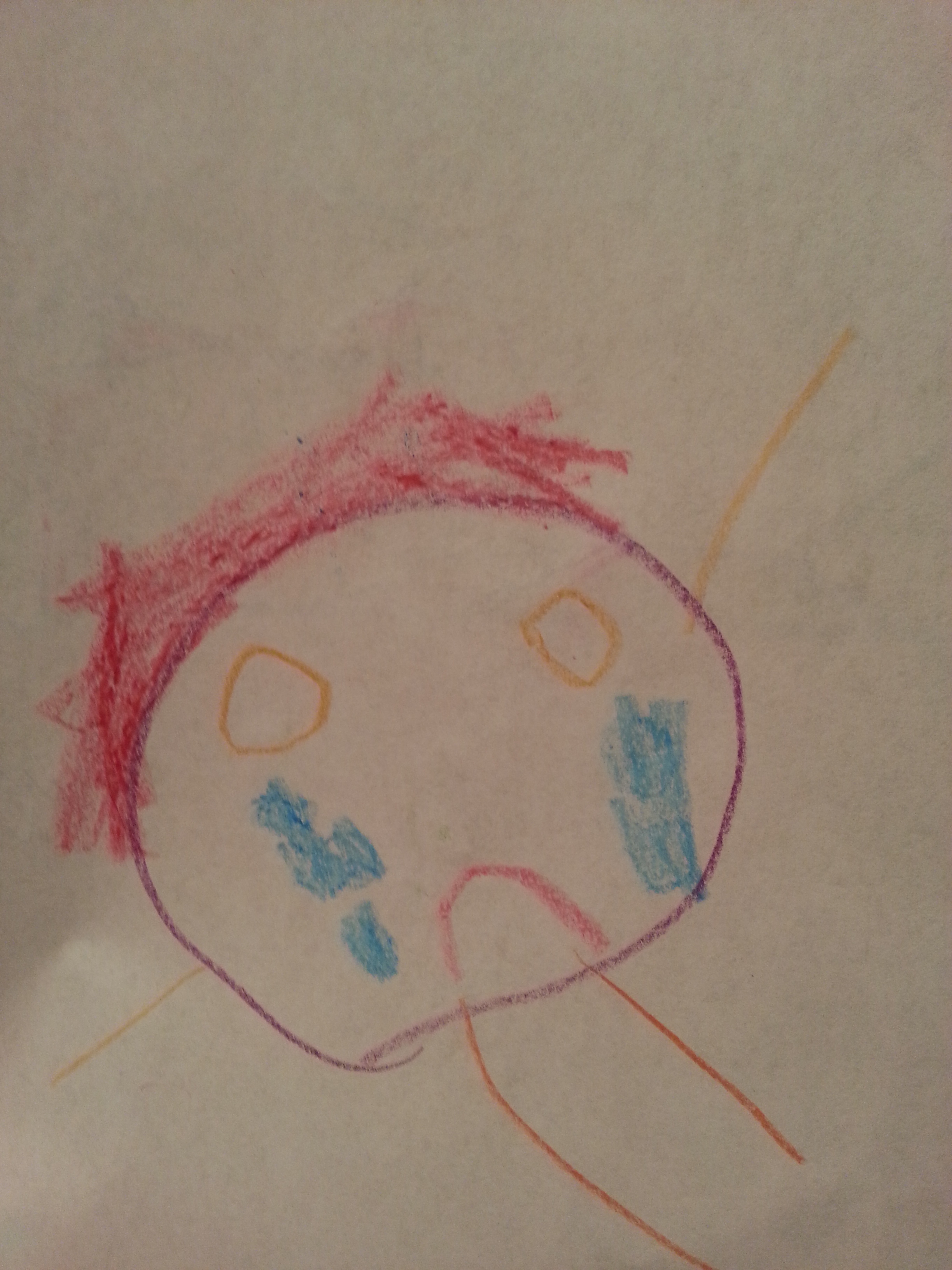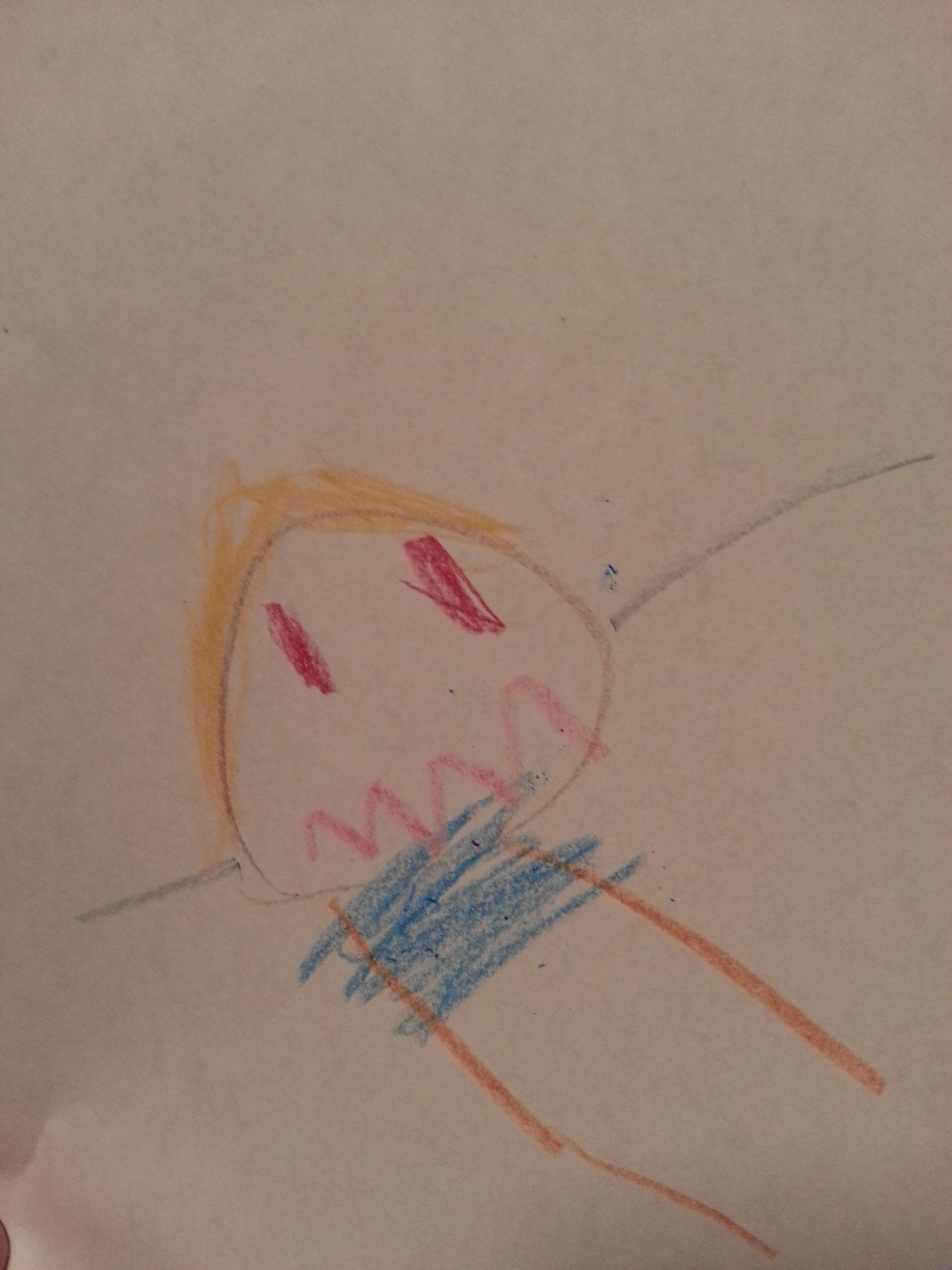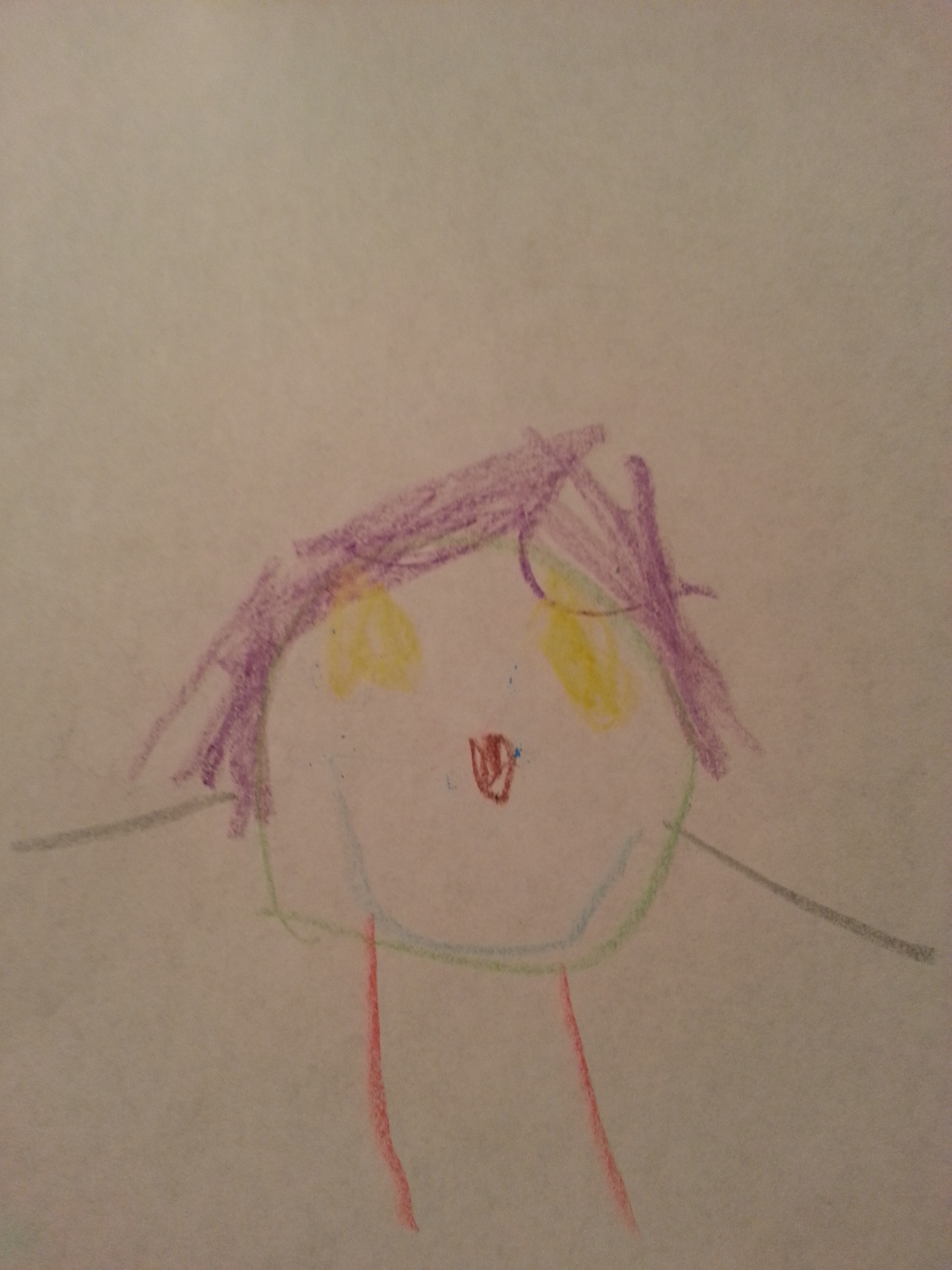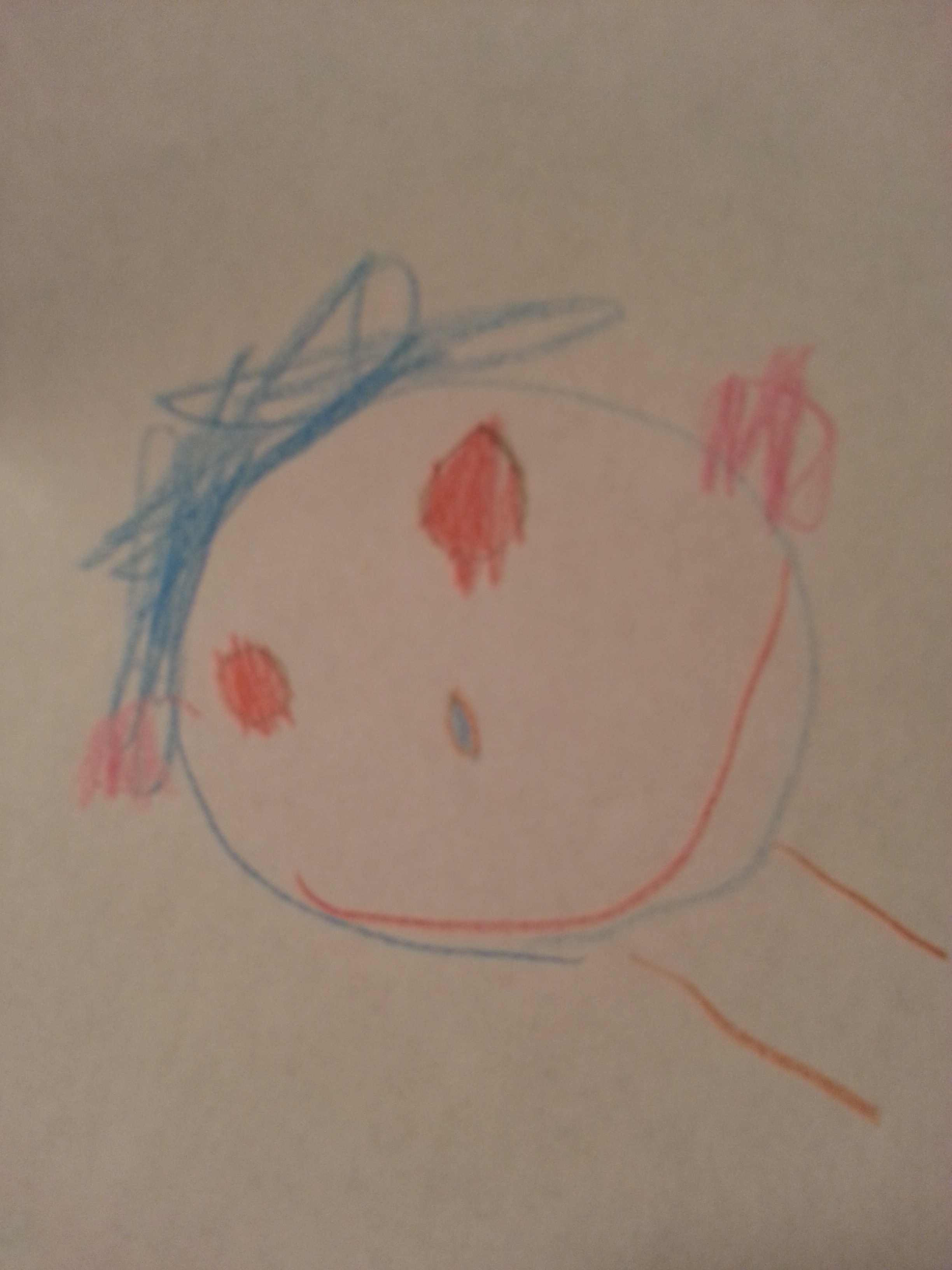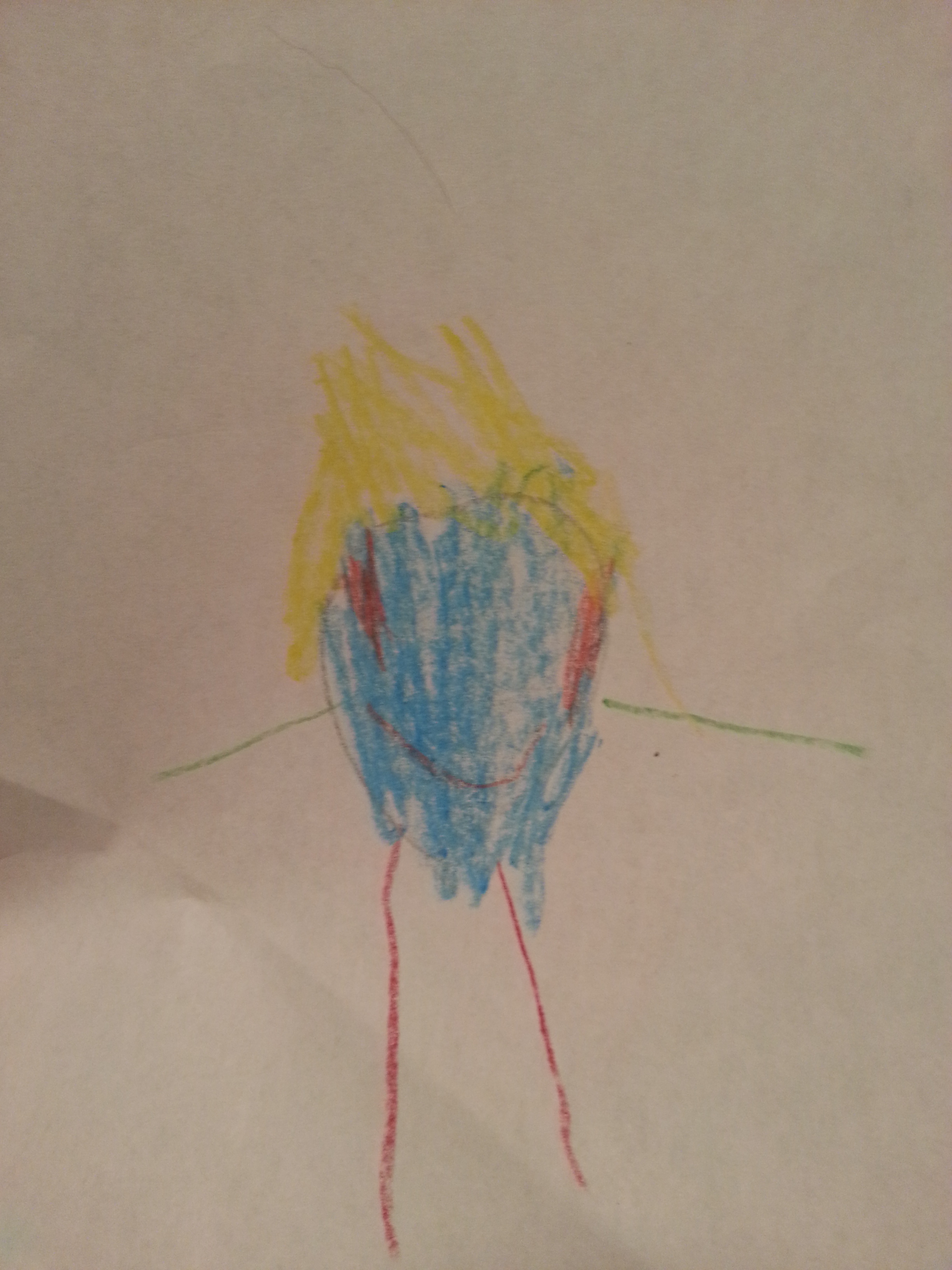The most common complication after a tonsilectomy is the rare possibility of serious bleeding either immediately following the surgery or between post-op days 5 thru 7. In order to ensure we were available to nurse our 4yr old daughter back to health and closely monitor her recovery, my wife and I scheduled the surgery over our Christmas vacation.
A significant part of the monitoring process is determining the patient's pain level...which is quite difficult when dealing with a little girl who inherited her mother's stoicism. One of the ways we were able to accurately guage her level of pain was to utilize a method similar to the one used by nurses, physicians and physician's assistants at the hospital known as the Wong-Baker Pain Rating Scale. Upon any visit, they show a series of faces displaying a range of emotion from sad to happy(see below) and are asked to.point out which face represents the way they feel.
After observing that Catherine was having difficulty swallowing while telling us that she felt "just fine!" we decided to break out a large tablet and crayons to draw together. After getting a few designs, ducks, dogs and sunsets under our belt, I suggested that we draw ourselves. The result was interesting but not surprising. What our daughter drew at that moment and each day following was a more "honest" representation of how well her medicine was working than her strictly verbal response to our asking.
Although some people are excellent judges of character and possess an intuition that is remarkable...these traits and skill sets are not without bias and fallible at best. Self evaluations and inter-company surveys promising anonymity may offer some insight as to the satisfaction level of an organization's employees. However, nothing removes the pressure of expectation and discomfort of confrontation as much as what I call "dissociative diagnostics"... similar to "Play Therapy" which facilitates communication for children by modest dissociation.
According to the psychodynamic view, people (especially children) will engage in play behavior/therapy in order to work through their interior obfuscations and anxieties. Because professional adults are more calculating than children and are more likely to know when they are being "diagnosed" or "tested", drawing pictures or playing with dolls is not going to create a great enough dissociation from themselves.
I propose that one may obtain a more accurate account of an employee's opinions, concerns and overall satisfaction if they can be drawn into some degree of projection through an evaluation exercise in which they are asked to evaluate an outside organization whose operations closely mirror their own. The disclosed pretense for such an experiment may yield an ancillary benefit almost as valuable as that of the primary purpose through the actual identification of key procedures and/or practices within the evaluated organization that may be adopted or avoided by their own.
Just as it is important for children to be allotted time for "free play" or "unstructured play" when this therapy is used as a self-help mechanism, so too would the expected and/or conventional evaluation methods need to be employed if a version of this therapy is expected to be effective in breaking down barriers with professional adults. Meeting a subject's environmental expectations is imperative in affording them the ability to suspend suspicion of being the experimental group.


